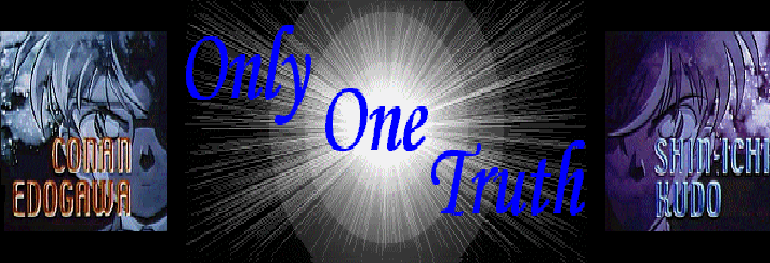

 "> "> | Mole concept is actually not that difficult to learn. The first thing you have to do is the memorise these formula and make sure its at ur fingertip! 1. Mol = Mass / Ar or Mr 2. No. of Particles = Mol x 6 x 10^23 3. Concentration = Mol / dm^3 or Mass / dm^3 4. Volume of gas = Mol x 24dm^3 5. 1dm^3 = 1000cm^3 Notice that ALL the formulae has something got to do with mol? Hence, when you are doing mol qns, 1st step: Find Mol by using the 4formulae 2nd step: Use known mol to find the unknown you are required to find try this problem example 1 What is the ratio of the volume of 2g of hydrogen to the volume of 16g of methane, both volumes at r.t.p? when you give up / check answer pls highlight the space below :) Follow the step, find mole first. mol of hydrogen : 2g/2 = 1mol=1mol Note: hydrogen is exist as H2 when left alone, otherwise in ion form]
now, apply the volume of gas formula : mol x 24dm^3 so 1 x 24dm^3 = 24dm^3 Vol. of Hydrogen : Vol. of Methane ..........24.............:...........24 ...........1..............:............1 ( answer ) easy? jus keep applying that 4 basic formulae and you have mastered 40% of mol concept. Fast? LOL now next i will teach you how to tackle another type of question which is about pencentage mass heres the basic concept between the relationship between Ar / Mr and mass Mr = total number of neutrons + protons Since neutrons and protons are weigh same, it does not matter if neutrons are more than protons. imagine Mr is the same as mass but DO NOT use it as mass! [Eg: a 56Ar of Fe does not means Fe has 56g, i give u 1 bar of iron and it weigh 56g? LOL not logic right?] The Mr only provide us the UNITS confused? don worry... now the method im going to teach is PROPORTION METHOD! this method in fact works with concentration, heat capacity, air pressure and waves problem example 2: Calculate the mass of water in 80g of MgSO4.7H2O The 'dot' means the number of water molecules surrounding the compound. Hence, in this case, there are 7 water molecules surround 1 MgSO4 molecules. Clear? The crystal weigh 80g, and since Mr is the CAUSE of weight so... Find the Mr of the compound : 24 + 32 + 4(16) + 7(18) = 246 now, take it as units 246units ---> 80g your finding mass of water so its Mr is : 7(18) = 126 so basic maths, you are finding 126 units, so you have to find 1unit first 1unit ---> 80g / 246 126units ---> 80g/246 x 126 = 41g simple? Now try this: Calculate the mass of zinc in 48g of zinc carbonate Mr of ZnCO3 = 125 125 = 48g Ar of Zn: 65 Mass of Zn: 65 / 125 x 48 = 25g Using proportion method on concentration: 0.1mol in 50cm^3 1st, put it together as 0.1mol/50cm^3 change the 50cm^3 to 1dm^3 which is, you have to times by 200 when one side times by 200, the other side must also times by the same no. that is, 200 hence, 0.1 x 20/ 50 x 20 = 2mol/dm^3 now done, lets proceed to, in tackling equations question that everyone hates ^^ heres the steps for eqn problem solving 1st step: find the mol ratio 2nd step: use the mol ratio to find the mol using any information given and the 4formulae 3rd step: using proportion method, mol ratio provide UNITS, use it to find the mol of another substance 4th step: after getting the mol of the substance you want, use the 4basic formulae again to find whatever the question asked However, there are difficult eqn qns that will involves limiting reagent, percentage yield and molecular formula. now, i will demostrate 1 simple equation but you will have to REALLY DO MORE on 10yrs series or other assesment books Limiting reagent is the substances that is LACKING in the reaction which means, this substance will use up first Percentage yield is nothing to be terrified, all you have to do is to find mol, then find mass. its formula is Actual Yield / Theoretical yield x 100%. blur? not a problem, just remember, the 2 mass you have gotten, the smaller will ALWAYS divided by the larger number. forgot? use common sense, can u get more than 100%? :D no~ right? so its simple. the actual yield is given in the question most of the time.
problem example 3: 2H2 + O2 ---> 2H2O Given that 72dm^3 of hydrogen react with 48dm^3 of oxygen (a) Which is the limiting reagent? (b) Find the volume of oxygen reacted? (c) Find the mass of water produced? (d) What is the total number of water molecules formed? (e) What is the percentage mass of oxygen in water? (f) Find the percentage yield when only 60g of water produced (g) Find the concentration of the solution if there is 21g of salt[NaF] dissoved into 500cm^3 of water Solution: a) Hydrogen , when 72dm^3 of hydrogen is reacted b) 36dm^3 mol of hydrogen = 72/24 = 3 using mol ratio Hydrogen : Oxygen = 2:1 so mol of oxygen is 3/2 = 1.5 Volume of oxygen : 24dm^3 x 1.5 = 36dm^3 remember...mol ratio are only units c)since hydrogen and water have the same mol ratio, they have the same mol which is 3 using the formula: 3 x 18 = 54g d) once again using the formula: 3 x 6 x 10^23 = 1.8 x 10^24 e) proportion method again: 16/18 x 100% = 88.9% f) for concentration, you have to find the amount of substances dissolved hence since concentration is mol/dm^3 you have to find the mol of NaF mol of NaF: 21/42 = 0.5 now, put everything together again: 0.5mol/0.5dm^3 = both sides x2 = 1mol/1dm^3g) always the smaller divided by larger...so.. percentage yield : 54/60 x 100% = 90% ok last question on molecular formula In a reaction, 4g of carbon reacts with 0.6g of hydrogen. The compound formed has a molecular mass 28g (a) Determine the emptical formula for the compound (b) Determine the molecular formula for the compound Solution: (a) due to presentation expectation from koh yilin =.= we have to draw table zzz as usual, always find mol first ....................C.........H Mass given.. 4......... 0.6 Ar is ...........12......... 1 Mol........... 0.3........ 0.6 hence, through mol ratio that you have jus find out, it is the no. of atom with different element in the formula [ in this case since carbon to hydrogen is 1:2 so the formula is CH2] simple? b) molecular formula is the easiest, just divide the Mr of the molcular formula compound (most of the time is given in the question) by the Mr of the empirical formula compound. Mr of CH2 = 14 Mr of molecular=28 divide it, 28 / 14 = 2 this number that u get, MULTIPLE it into the formula (CH2)2 == C2H4 NOTE: PLS DO NOT WRITE 2CH2 ITS WRONG! this is reEDITed version, i've found out why every1 is confused at concentration le~ concentration is the amount of SOLUTE dissolved in the solution, hence you can 'split' the concentration into parts for you to get the informations its like dissolving 50g of solute [eg: NaCl] into 100cm^3 of water so your concentration can be written as 50g/100cm^3 however, most of the time we leave it in mol/dm^3 form. the method is simple by proportion method, you have to change the 100cm^3 into 1dm^3, therefore, u simply jus multply by 10 to get 1000cm^3=1dm^3 now ur current concentration is written as 500g/dm^3 so how to convert it into mol/dm^3? this will be jus another basic, simply view the 500g separately. using 1 of the 4basic formula, convert mass into mol, 500/58.5 = 8.54mol so now the concentration is 8.54mol/dm^3 ! Note: you can always view the mol or mass part separately from the concentration BUT BUT BUT! ALWAYS, take note of the volume, if its 50cm^3 you have to divide it by 200 from 1dm^3 Titration formula: n1/n2 = m1v1/m2v2 n= mol ratio, m=mol,v=volume this is another method that can use to find the unknown but ONLY in titration thats all for mol...u have to do quite a lot urself or else its not easy to master |